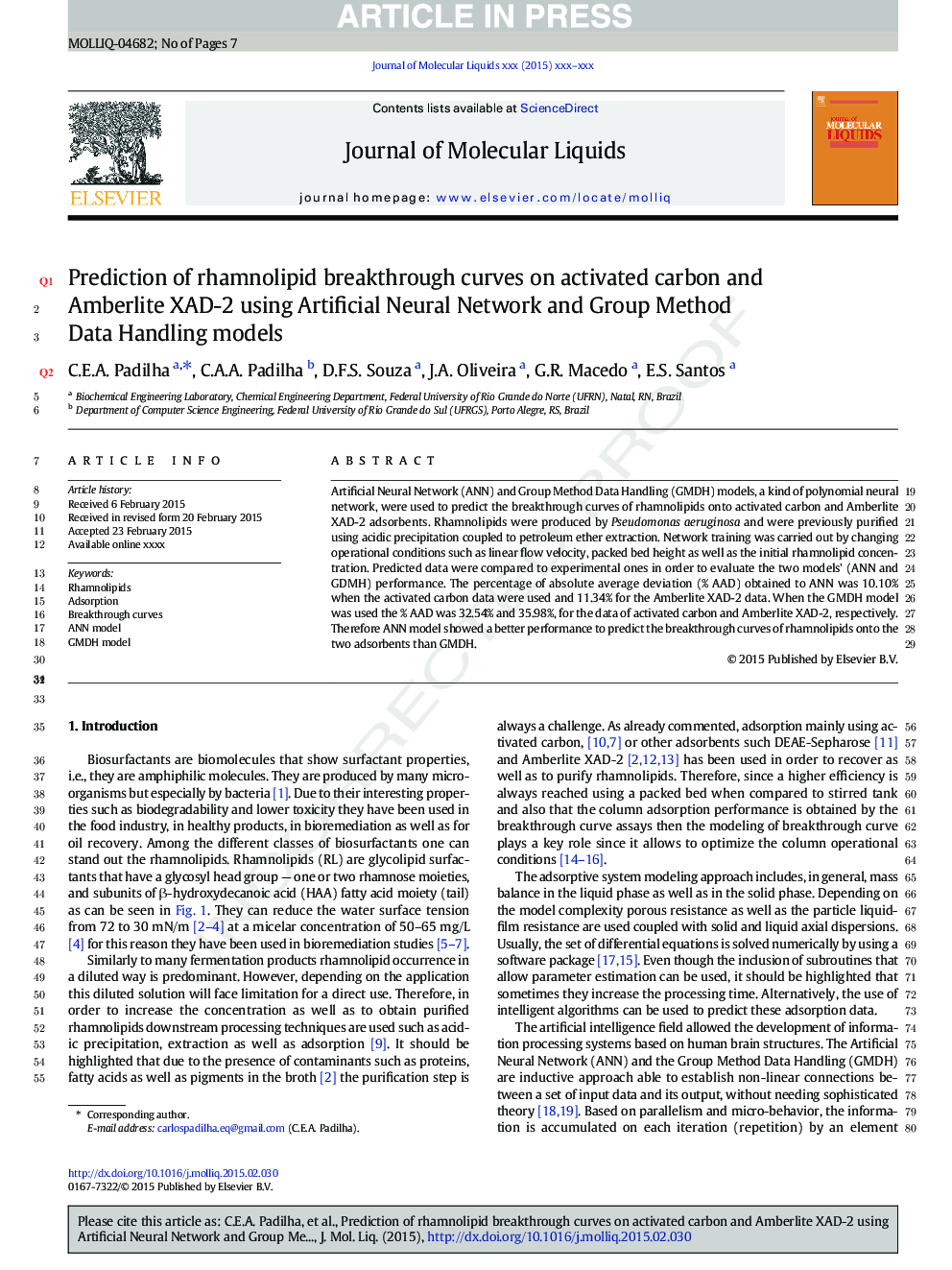| Article ID | Journal | Published Year | Pages | File Type |
|---|---|---|---|---|
| 5411083 | Journal of Molecular Liquids | 2015 | 7 Pages |
Abstract
Artificial Neural Network (ANN) and Group Method Data Handling (GMDH) models, a kind of polynomial neural network, were used to predict the breakthrough curves of rhamnolipids onto activated carbon and Amberlite XAD-2 adsorbents. Rhamnolipids were produced by Pseudomonas aeruginosa and were previously purified using acidic precipitation coupled to petroleum ether extraction. Network training was carried out by changing operational conditions such as linear flow velocity, packed bed height as well as the initial rhamnolipid concentration. Predicted data were compared to experimental ones in order to evaluate the two models' (ANN and GDMH) performance. The percentage of absolute average deviation (% AAD) obtained to ANN was 10.10% when the activated carbon data were used and 11.34% for the Amberlite XAD-2 data. When the GMDH model was used the % AAD was 32.54% and 35.98%, for the data of activated carbon and Amberlite XAD-2, respectively. Therefore ANN model showed a better performance to predict the breakthrough curves of rhamnolipids onto the two adsorbents than GMDH.
Related Topics
Physical Sciences and Engineering
Chemistry
Physical and Theoretical Chemistry
Authors
Carlos Eduardo de Araújo Padilha, Carlos Alberto de Araújo Padilha, Domingos Fabiano de Santana Souza, Jackson Araújo de Oliveira, Gorete Ribeiro de Macedo, Everaldo Silvino dos Santos,
